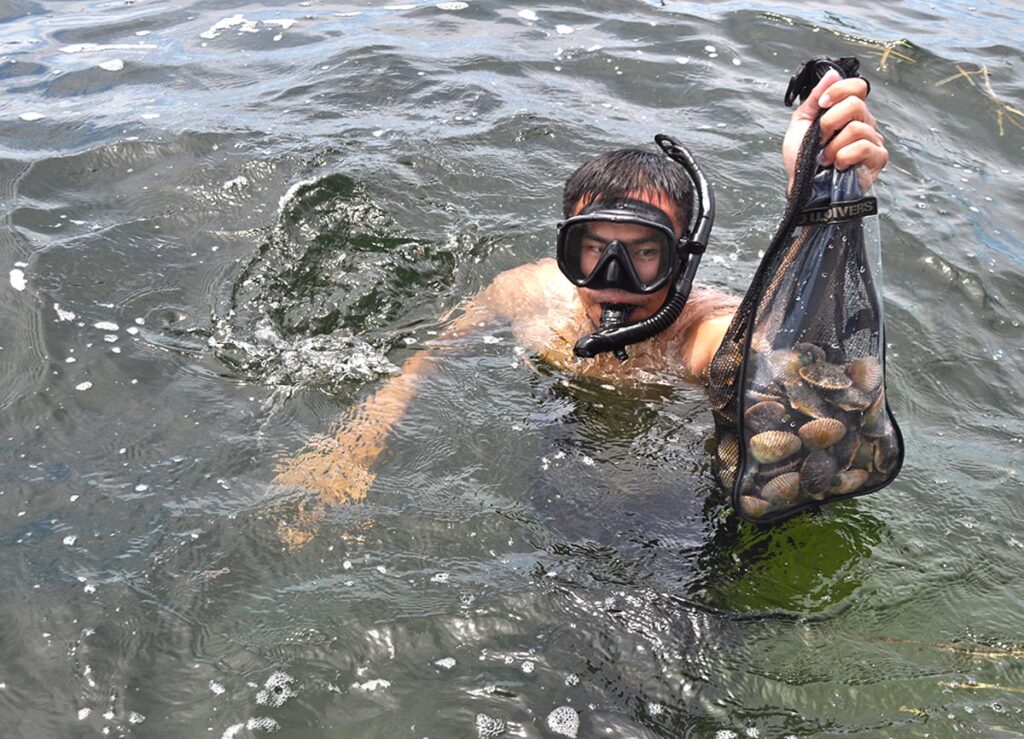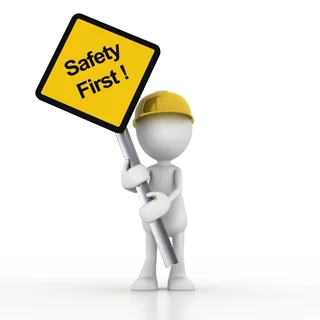As the seasons change, so do the opportunities for exciting outdoor activities. Scallop season marks a highly anticipated time of the year for adventurers and seafood lovers. Let’s dive in (pun intended) to our top tips for scalloping in Florida.
1. Know the Regulations:
Before you set out on your scallop harvest, it’s crucial to familiarize yourself with the local regulations and guidelines.
The Florida Fish and Wildlife Conservation Commission places restrictions on scallop harvesting, including as catch limits, size restrictions, and designated harvesting areas. By understanding and abiding by these regulations, you ensure the sustainability and conservation of the scallop population.

2. Gather the Right Gear:
Having the appropriate gear is essential for a successful scallop harvest. Here are some essentials to consider:
- Mask and snorkel: Look for a mask with tempered glass and a water tight fit to your face. A slow leak of water into your mask is the last thing you need while trying to hunt for scallops!
- Fins: Invest in a pair of fins designed for snorkeling or diving. Fins provide propulsion and maneuverability, making it easier to cover larger areas in search of scallops.
- Mesh bag: A sturdy mesh bag is ideal for storing your harvested scallops. It allows water to drain out while keeping the scallops secure.
- Dive flag: If you’re diving from a boat, make sure to display a dive flag to alert other boaters to your presence in the water.
- Cooler full of ice: After sorting the scallops from your dive, place them on ice for the boat ride back to shore.

3. Learn Scallop Habits:
Understanding the habits and habitat preferences of scallops can significantly improve your chances of a successful harvest. Scallops are usually found in seagrass beds, near sandy bottoms, or close to rocks and coral reefs. They tend to hide in crevices or bury themselves in the sand, so keep an eye out for subtle signs such as half-buried shells or slight depressions in the seabed.

4. Timing is Key:
Late June through September is the usual bay scallop run in Homosassa.
2023 Scalloping Season in Florida
- Fenholloway through Suwannee Rivers Zone (including Keaton Beach and the Steinhatchee area): June 15 through Labor Day 2023
- Pasco County: July 1-Aug. 6, 2023
- Levy, Citrus, and Hernando counties (Cedar Key, Crystal River, and Homosassa): July 1 through Sept. 24, 2023
- Franklin County through northwestern Taylor County ( Carrabelle, Lanark, and St. Marks): July 1 through Sept. 24, 2023
- St. Joseph Bay & Gulf County: Aug. 16 – Sept. 24, 2023

5. Safety First:
While scalloping can be a thrilling experience, it’s important to prioritize safety. Here are some safety tips to keep in mind:
- Dive with a buddy: Never venture into the water alone. Diving with a buddy provides an extra layer of safety and assistance if needed.
- Attach a safety float to the boat with a rope: Not everyone who scallops is a strong swimmer. A safety float allows swimmers to rest between underwater dives.
- Check weather conditions: Before heading out, check the weather forecast. Avoid scalloping during inclement weather, as it can pose risks such as strong currents or choppy waters. It’s very easy to get caught in a fast approaching summer storm.
- Stay hydrated: Remember to drink plenty of water and stay hydrated throughout your scalloping adventure.
- Watch for marine life: Be aware of your surroundings and keep an eye out for marine life, such as jellyfish, stingrays, barracuda and sharks. Remove reflective jewelry, avoid contact, and maintain a respectful distance.

6. Thoughtful Techniques:
When you spot a scallop, it’s time to employ proper techniques for harvesting. Here’s how to maximize your chances of success:
- Approach Calmly: Approach the scallop slowly and calmly to avoid scaring it away. Sudden movements can cause scallops to “swim” away.
- Position Yourself: Once you’ve identified a scallop, position yourself carefully to get a clear view and avoid disturbing the surrounding seafloor.
- Measure and Sort: Immediately after harvesting, check the size of each scallop. Discard any undersized scallops to comply with regulations and ensure the continued growth of the population.
- Gentle Harvesting: After the scallops have sat on ice for a couple of hours, use a thick glove and a scallop knight to gently and carefully pry the scallop from its attachment point. Avoid damaging the scallop or its shell.

7. Culinary Delights:
After a successful scallop harvest, it’s time to enjoy the fruits of your labor. Scallops are known for their delicate flavor and versatility in the kitchen. From searing and grilling to ceviche and chowders, there are endless culinary possibilities. Explore recipes that showcase the natural sweetness and tender texture of scallops, and savor the rewards of your hard work.
Scallop season presents an exciting opportunity to immerse yourself in nature and indulge in the thrill of the harvest. By following these tips, you’ll be well-prepared to embark on a successful scalloping adventure. Remember to respect the environment, adhere to regulations, and prioritize safety. Happy scalloping!
Need a place to stay for your scalloping adventure? Look no further than Cedar Breeze RV Resort in Homosassa.






